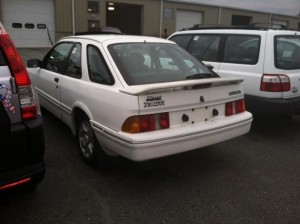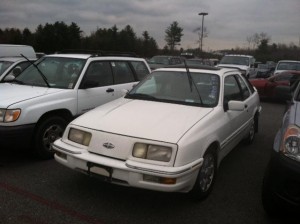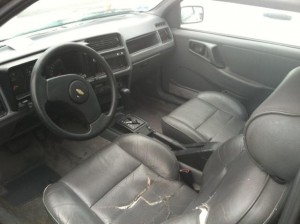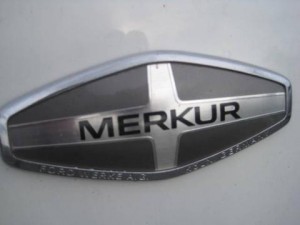By: Sam Andrews
Quick: what was Ford Motor Company’s last spin-off brand in the United States?
If you can’t remember, don’t blame yourself. The brand was named ‘Merkur’ and it only lasted two models during the final four years of the 1980s.
Merkur’s brief time on this planet was memorable to those who were watching, however.
It all started when Ford decided to jump onto the Euro-fever bandwagon in the mid 1980s, when products that either genuinely came from Europe or were inspired by Europe sold well to adults looking to get the best for their buck. Some of the better examples would be superbly engineered BMW or Mercedes-Benz of the era, genuinely European, worth the cost, and selling very well in the U.S. The goofiest examples would be cheap wines and perfumes or any grocery-level products stamped with something like “European-style!” to catch anybody’s attention.
Fortunately, the car that Ford did decide to market as “European” to Americans was in fact genuinely European.
Most Americans were and still are unaware that Ford’s European division builds and sells a completely different range of vehicles overseas than they do here. So when they opted to bring a new car to America, they selected a chassis and body from their European brand. The car was the Ford Sierra, which has been introduced in Europe in 1982 and built in Germany, among various other places. The Sierra featured smooth aerodynamic styling, efficient engines and a range of body-styles.
For the Sierra’s transformation to the U.S. market, Ford created a whole new brand name to sell it under called Merkur, which was the German spelling of Mercury, Ford’s twin luxury brand in the United States. The model name ‘Sierra’ was changed to the sporty-sounding ‘XR4Ti’. Styling was changed as well and the model would be offered in just one style: a two-door hatchback with double-stacked rear spoilers and a controversial set of third windows for the rear pillars.
But Ford ran into some problems when it came to bringing these cars to the United States. Ford, despite being a U.S.-based company, had to comply with U.S. automotive importation regulations to sell the Merkur because they were manufactured in Europe. That meant that the new XR4Ti would have to be tweaked yet further to make it to the U.S. market. So you had a U.S. company, making a car in Europe, then trying to bring it back here to sell. Who knows how much was spent (and lost) meeting U.S. regulations. Wouldn’t it just have been easier for Ford to build a quality sport coupe in the U.S. and sell it here too? The whole rather calculated and convoluted process the way Merkur came to be gave the car an air of desperation from the start.
It also didn’t help that even the name brought confusion. Americans didn’t know how to pronounce ‘Merkur’. Apparently the proper way should sound like “mare”-“core”, but one can only imagine how many ways it was jumbled. The pronunciation debacle made it seem like some strange foreign car when in fact it was just another Ford product.
Fortunately, when all was said and done, the XR4Ti wasn’t a bad car. The styling divided opinions but was overall taught, well-proportioned and unique looking. The hatchback provided versatility. The engine was a peppy turbocharged 4-cylinder (hence the name, “4Ti”). The car also came with lots of amenities like heated leather seats and a sunroof. Production lasted from 1985 to 1989 resulting in 42,464 units made.
In 1988, the XR4Ti gained a bigger sibling when a whole new model was added to the Merkur brand: a full-size four-door hatchback named Scorpio. Like the XR4Ti, it was based on a European Ford variant.
Ford stopped making and selling Merkur in 1989.
The Merkur flame was brief but bright. Today, they live on in collector clubs as a fun reminder of the era and an interesting corporate experiment, one Ford has not attempted again since.
Our generously Car Talk donor’s donated XR4Ti is a later 1988 model with 105,700 on the odometer, white paint, leather seats, automatic transmission and sunroof visor.




